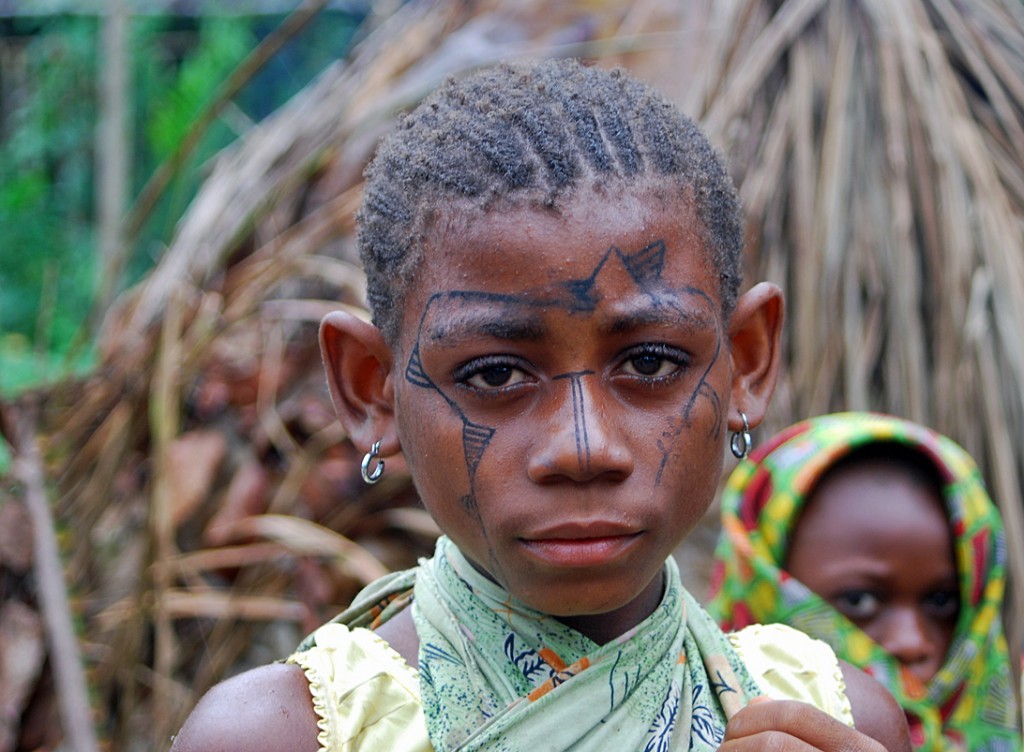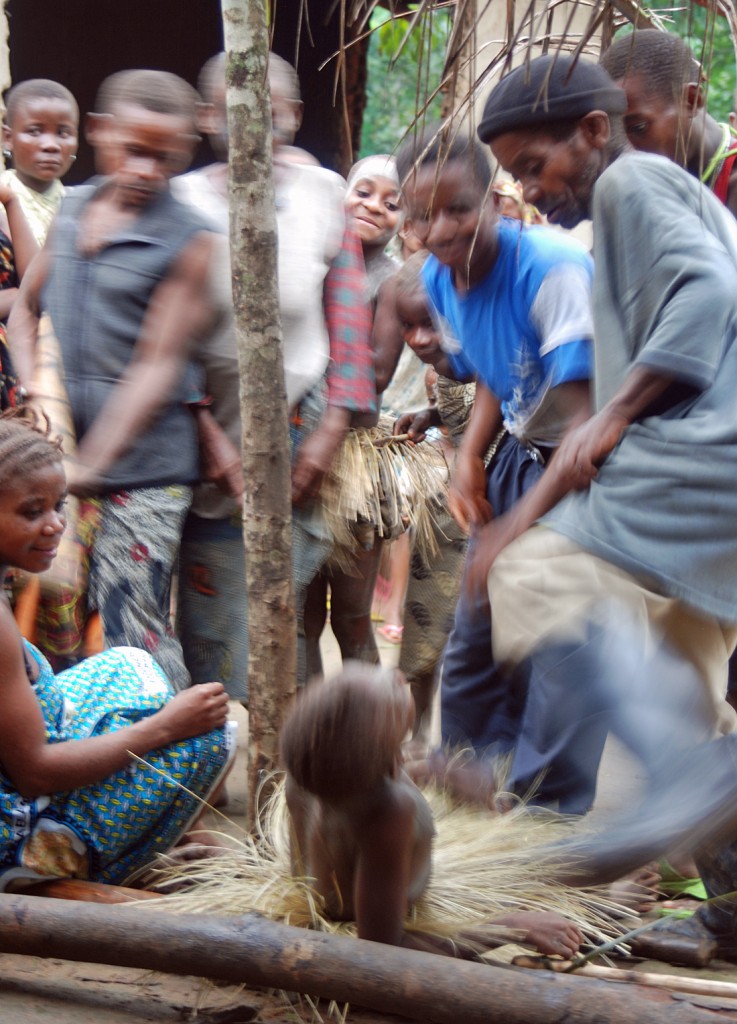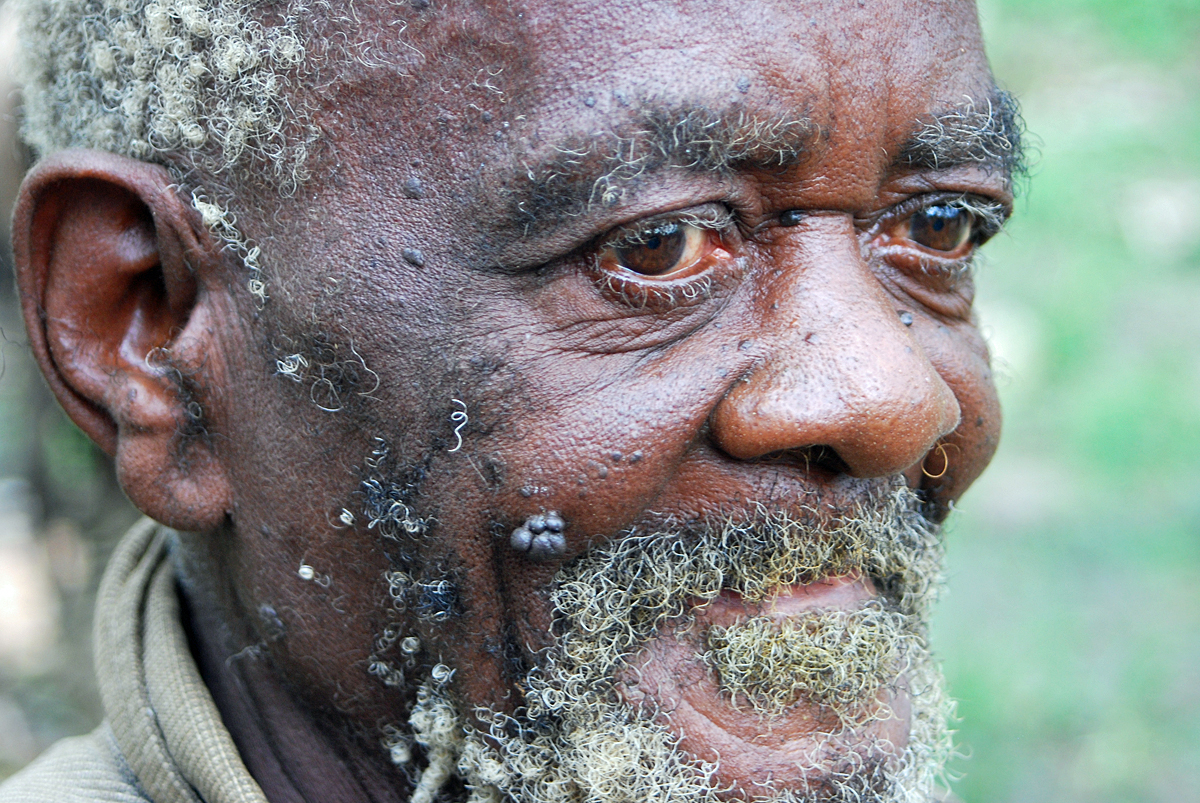“Is the molimo still part of your world?” I asked and managed to make him surprised!
“The molimo…” , he whispered, “….we shouldn´t talk about the molimo. It is hidden out there!”
I was referring to a kind of a holy and spiritual being for the mbuti pygmies, which took the shape of a long object from which one could make different sounds. This instrument is hidden in the forest, their home, only to be seen by the men. Only used once a year at a special celebration. At least according to Colin Turnbull´s excellent book The Forest People. (Which has been recently analyzed and seen in new light, see here!) And since the pygmy in front of me reacted like that, it still exists. Otherwise, life since Turnbull´s book, written at the end of the 1950´s, have changed quite a lot for these fantastic people. At least if I judged by the man in front of me. He was dressed like a smaller version of Mobutu Sese Seko, the former dictator of Congo, and sported a hat worn by Muslims.
“They do anything for money” , a friend of mine added, “because when the Muslims arrived here to Epulu, they offered money to people who became Muslims. And for the money they can buy alcohol. They don´t know anything about the outside world. this guy doesn´t even know his own age if you ask him. They are like animals.”

The guy he pointed to was no taller than 140 cm, looked really rough and one could easily see traces in his face of far too much alcohol consumption. He looked pretty much like a guy I remember meeting at the same place, at the Epulu Station, 21 years ago. The first time I came across these extra ordinary people. Most of them I met at the station were they worked by collecting leaves for the okapi. Or where they like these fellows, hanged around hoping they could get something out of the tourists. Either selling arrows, bows or some kind of a handover. But like back than, they were only a fraction of the pygmies in this area. And like than, everyone had an opinion about them. They were childish, naive, easy to fool or like animals. Depending on who you talked to.
“Oh, they do smoke a lot of marijuana!”, my very good friend Olly Steeds said when he finally turned up in Epulu and we met after just missing each other for a week, “But they are a great people! And it seems like they have preserved their knowledge how to survive in the forest by hunting and gathering.”
Olly had spent five days with a group of mbuti hunters, who were still catching their prey with big, 30 meter long nets. Their camp was a bout half an hour away. There was one even closer, just quarter of an hours walk away from the station, a permanent village, located just a bit away from the real Epulu Village. We all went over there in the evening and we walked into a life where they partly lived in their traditional huts made out of twigs and big leaves, and partly in new houses. The women were working as usual and the men sat around smoking. A young, well dressed pygmy greeted us. He was the new chief of the village and he had also taken Jesus to his heart. His father came over, who used to be the former chief, and shook hands. he had a white beard and look as wise as a former village chief should look like. It didn´t take long until the women started to sing during their work in an amazing series of sounds! All smiling and laughing. Like all native people, they´re so easy to meet and be together with. Just curious and relaxed. Suddenly the sky opened and rain and thunder arrived. So we returned quickly back to the station but returned next day again. A visit which is a high light in my life.

It was drizzling slowly when we walked into the village, met a young girl, painted white on body and face, wearing a skirt made of leaves and she danced slowly to the monotonous beat of the drum. After awhile the whole village joined in, so did we, dancing in a ring, whilst the elders of the village, smoked and watched us closely. Suddenly, the dancing stopped and the village kind of split up in two groups and did kind of a theater play, where the storyline was easy to follow and it was played at great suspense. It was the former rebel leader Bemba attacking the village, eating the blood of the virgins, after having cut their heads off.
They finished our visit by singing in the traditional way of an African church choir. Very strong, very moving and very spectacular. We left the pygmies feeling very extra ordinary and privileged. Exactly as I did 21 years ago.
For more info about the pygmies, read this excellent summery from National Geographic.
See this slide show from Congo!

